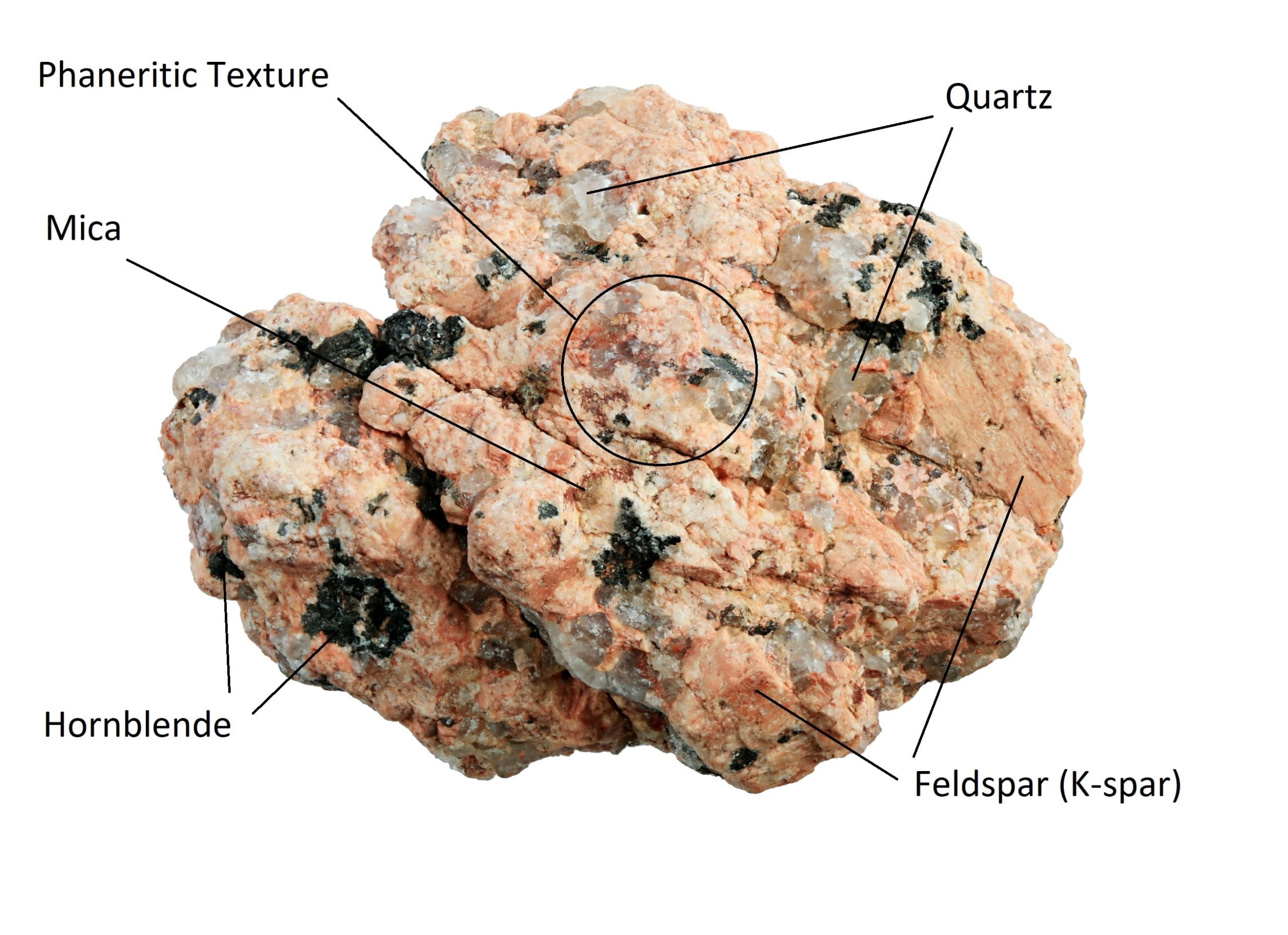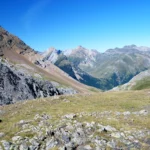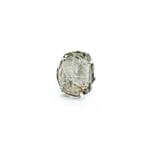Imagine gazing upon a rock, its surface adorned with a captivating mosaic of crystals, each one discernible to the naked eye. This, my friends, is the allure of a phaneritic rock – a geological marvel offering a glimpse into the Earth’s fiery past. But what exactly are these large crystals, and what secrets do they hold about our planet’s history? Let’s delve into the captivating world of phaneritic textures and uncover the stories whispered by these magnificent formations.
Large, Visible Crystals: The Hallmarks of Phaneritic Igneous Rocks
In the realm of geology, texture holds the key to understanding a rock’s origins. When we speak of “phaneritic” textures, we’re referring to igneous rocks characterized by a distinctive feature – large crystals that are readily visible without the aid of a microscope. The term itself, derived from the Greek word “phaner” meaning “visible,” perfectly encapsulates this defining characteristic. These prominent crystals, often measuring several millimeters or even centimeters across, lend phaneritic rocks a coarse-grained appearance that sets them apart.
But what orchestrates the formation of these impressive crystal structures? The answer lies in the depths of our planet, where a molten dance of creation unfolds.
Slow Cooling, Big Crystals: How Phaneritic Textures Reveal an Igneous Rock’s Past
Deep beneath the Earth’s surface, churning within the planet’s crust, lies magma – molten rock seething with intense heat and pressure. As this magma slowly ascends towards the cooler confines of the upper crust, a remarkable transformation begins. With the gradual decrease in temperature, the once-chaotic dance of atoms within the magma transitions into a more orderly arrangement. Minerals begin to crystallize, each type growing according to its unique chemical blueprint.
Here’s where the magic of phaneritic textures unfolds: the slower the cooling process, the more time these mineral crystals have to grow. Picture it like a leisurely stroll versus a frantic sprint. When magma cools gradually over thousands, even millions of years, deep underground, it provides the ideal conditions for crystals to steadily accrete, layer upon layer, until they reach sizes easily discernible with the naked eye.
From Granite Countertops to Majestic Diorite: Phaneritic Rocks in Our Everyday Lives
Phaneritic rocks, with their captivating crystal structures, are not merely confined to the realm of geological textbooks. In fact, they are prominent players in our everyday lives, often gracing our homes, buildings, and even artistic creations. Let’s meet some of the most well-known members of the phaneritic family:
Granite: Perhaps the most familiar face in the phaneritic lineup, granite stands as a testament to enduring strength and timeless elegance. Its distinctive blend of quartz, feldspar, and mica, often interlocked in a mesmerizing dance of light and color, has made it a prized material for countertops, flooring, and architectural elements for centuries.
Diorite: This handsome rock, boasting a more subdued palette of grays and blacks, often with a speckled appearance, has long captivated sculptors and builders alike. Its medium-grained texture and subtle beauty have graced everything from ancient Egyptian statues to modern-day monuments.
Gabbro: With its characteristic dark hues, ranging from deep greens to blacks, gabbro often takes center stage in road construction and as a component of crushed stone. However, when polished, it can reveal a captivating beauty, making its way into decorative stonework and even jewelry.
These are just a few examples of how phaneritic rocks, forged in the heart of our planet, have found their way into our lives, showcasing both their durability and aesthetic allure.
Phaneritic vs. Aphanitic: A Tale of Two Textures in the Igneous Rock Family
To truly appreciate the grandeur of phaneritic textures, it’s helpful to contrast them with their fine-grained counterparts – aphanitic textures. While phaneritic rocks proudly display their large, visible crystals, aphanitic rocks tell a tale of rapid cooling and microscopic crystal formation.
Imagine a volcanic eruption, where molten lava spews forth onto the Earth’s surface or into the ocean depths. This sudden exposure to drastically cooler temperatures sends shockwaves through the lava, causing it to solidify at an accelerated pace. The minerals within the lava, caught in this frenetic freeze, have barely a moment to arrange themselves into ordered crystals. As a result, aphanitic rocks like basalt and rhyolite possess a fine-grained texture, their minuscule crystals often indistinguishable without the aid of a microscope.
This stark contrast in texture between phaneritic and aphanitic rocks highlights a fundamental principle in igneous petrology: cooling rate is king. The rate at which magma or lava cools dictates the size and arrangement of mineral crystals, fundamentally shaping the rock’s final texture and providing geologists with valuable clues about its formation history.
Unlocking Deeper Secrets: Delving into the Significance of Phaneritic Textures
Beyond their aesthetic appeal and practical applications, phaneritic textures serve as invaluable tools for geologists, offering a window into the Earth’s hidden depths and the processes that have shaped our planet over millennia. Here’s how:
Reconstructing Magma Chambers: The presence of phaneritic textures in igneous rocks points towards a history of slow cooling deep underground. This suggests that the magma from which these rocks crystallized likely resided within large, slowly cooling magma chambers, providing the necessary time for those signature large crystals to develop. By studying the size and distribution of crystals within phaneritic rocks, geologists can begin to piece together the size, shape, and cooling dynamics of these ancient magma chambers.
Deciphering Cooling Histories: The size of crystals within phaneritic rocks can also provide insights into the cooling history of the magma from which they crystallized. Larger crystals generally indicate slower cooling, while smaller crystals, though still visible to the naked eye, may suggest slightly faster cooling rates. This information helps geologists reconstruct the sequence of events that led to the formation and solidification of igneous rock bodies.
Unveiling Tectonic Settings: The types of minerals present within phaneritic rocks, along with their specific chemical compositions, can offer clues about the tectonic setting in which the magma originated. For example, certain mineral assemblages are characteristic of magmas generated at subduction zones, where tectonic plates collide, while others are indicative of magmas formed at mid-ocean ridges, where plates spread apart.
In essence, phaneritic textures, often overlooked by the untrained eye, hold a wealth of information waiting to be deciphered. By carefully analyzing these textures, geologists gain valuable insights into the Earth’s internal processes, unraveling the mysteries of magma generation, crustal evolution, and the dynamic forces that have shaped our planet.
Beyond the Surface: Further Exploration of Phaneritic Textures
Our journey through the world of phaneritic textures has only just begun. Here are a few avenues for further exploration:
Pegmatites: Giants Among Crystals: While all phaneritic rocks boast visible crystals, pegmatites take this concept to the extreme. These fascinating formations are characterized by exceptionally large crystals, often measuring tens of centimeters, even meters across! Explore the unique conditions that give rise to these crystal giants.
Porphyritic Textures: A Tale of Two Cooling Rates: Some igneous rocks exhibit a captivating blend of large crystals embedded within a finer-grained matrix. This intriguing texture, known as porphyritic, suggests a two-stage cooling history. Delve into the processes that can lead to such dramatic variations in crystal size within a single rock.
Phaneritic Rocks in Art and Architecture: From the majestic granite columns of ancient temples to the sleek, polished diorite countertops of modern kitchens, phaneritic rocks have woven themselves into the fabric of human civilization. Discover the rich history and diverse applications of these captivating stones throughout art, architecture, and design.
As you continue your exploration of the geological world, remember that even the most unassuming rock can hold a captivating story. The next time you encounter a rock adorned with large, visible crystals, take a moment to appreciate the intricate dance of time, temperature, and pressure that brought it into existence. For within those crystals lies a chronicle of Earth’s fiery past, patiently waiting to be deciphered.












